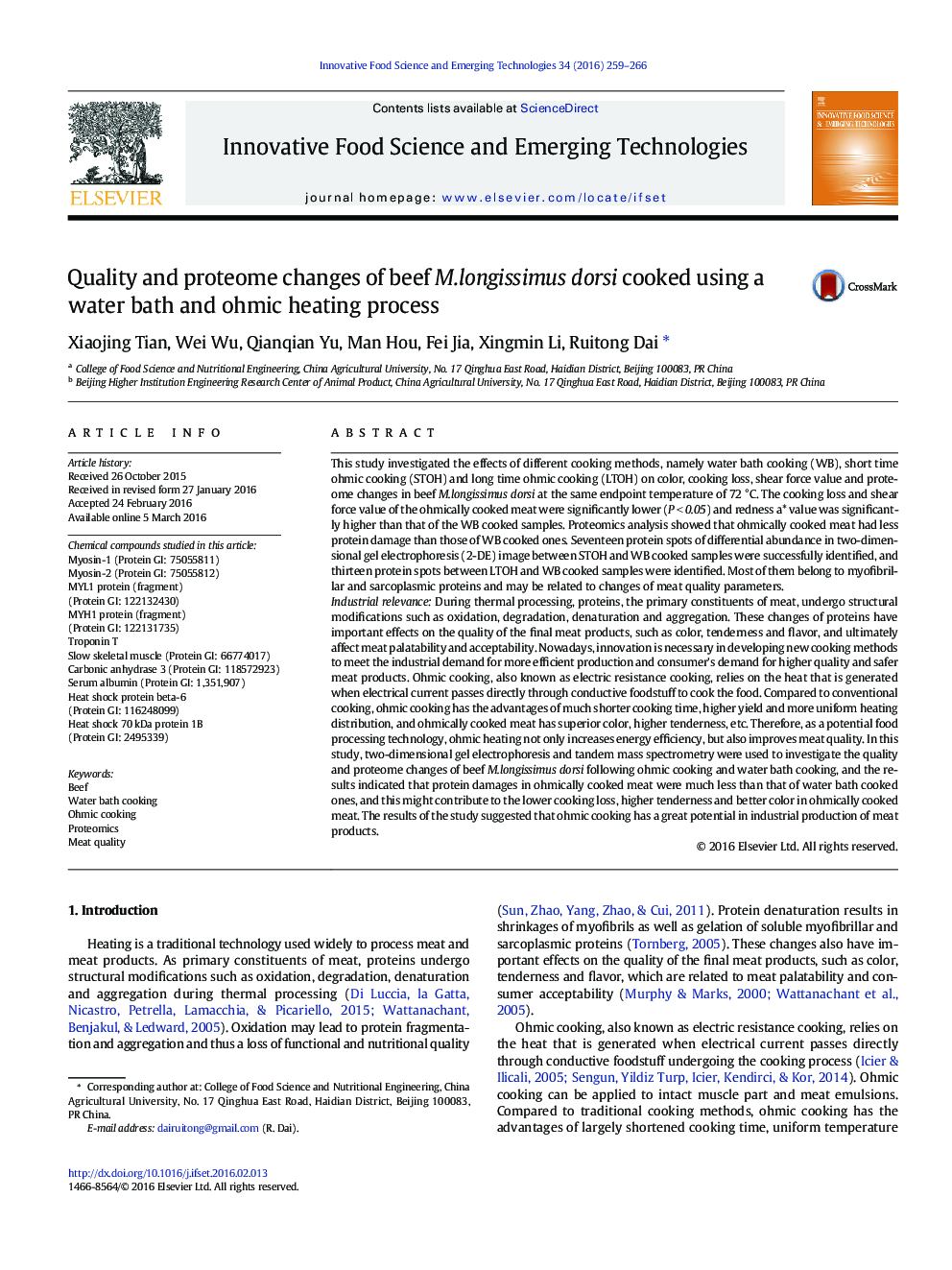| کد مقاله | کد نشریه | سال انتشار | مقاله انگلیسی | نسخه تمام متن |
|---|---|---|---|---|
| 2086378 | 1545532 | 2016 | 8 صفحه PDF | دانلود رایگان |

• Changes of meat quality in beef M. longissimus dorsi following water bath cooking and ohmic cooking are presented.
• Differentially abundant proteins of beef M. longissimus dorsi using ohmic cooking and water bath cooking were identified.
• Most of the differential proteins were more abundant in ohmically cooked meat than those of the water bath cooked ones.
• Less protein damages may be related to lower cooking loss, higher tenderness and improved color in ohmically cooked meat.
This study investigated the effects of different cooking methods, namely water bath cooking (WB), short time ohmic cooking (STOH) and long time ohmic cooking (LTOH) on color, cooking loss, shear force value and proteome changes in beef M.longissimus dorsi at the same endpoint temperature of 72 °C. The cooking loss and shear force value of the ohmically cooked meat were significantly lower (P < 0.05) and redness a* value was significantly higher than that of the WB cooked samples. Proteomics analysis showed that ohmically cooked meat had less protein damage than those of WB cooked ones. Seventeen protein spots of differential abundance in two-dimensional gel electrophoresis (2-DE) image between STOH and WB cooked samples were successfully identified, and thirteen protein spots between LTOH and WB cooked samples were identified. Most of them belong to myofibrillar and sarcoplasmic proteins and may be related to changes of meat quality parameters.Industrial relevanceDuring thermal processing, proteins, the primary constituents of meat, undergo structural modifications such as oxidation, degradation, denaturation and aggregation. These changes of proteins have important effects on the quality of the final meat products, such as color, tenderness and flavor, and ultimately affect meat palatability and acceptability. Nowadays, innovation is necessary in developing new cooking methods to meet the industrial demand for more efficient production and consumer's demand for higher quality and safer meat products. Ohmic cooking, also known as electric resistance cooking, relies on the heat that is generated when electrical current passes directly through conductive foodstuff to cook the food. Compared to conventional cooking, ohmic cooking has the advantages of much shorter cooking time, higher yield and more uniform heating distribution, and ohmically cooked meat has superior color, higher tenderness, etc. Therefore, as a potential food processing technology, ohmic heating not only increases energy efficiency, but also improves meat quality. In this study, two-dimensional gel electrophoresis and tandem mass spectrometry were used to investigate the quality and proteome changes of beef M.longissimus dorsi following ohmic cooking and water bath cooking, and the results indicated that protein damages in ohmically cooked meat were much less than that of water bath cooked ones, and this might contribute to the lower cooking loss, higher tenderness and better color in ohmically cooked meat. The results of the study suggested that ohmic cooking has a great potential in industrial production of meat products.
Journal: Innovative Food Science & Emerging Technologies - Volume 34, April 2016, Pages 259–266